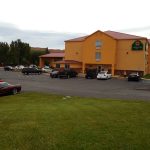In 1998, I was involved in a car accident that left me paralyzed, and I spent a month recovering in a Salt Lake City hospital. Years later, determined to create new memories in Utah, a friend and I embarked on an epic road trip to explore the five national parks in Southern Utah. We chose to travel in spring to avoid the scorching summer heat and winter closures, ensuring optimal conditions for our journey. Having our own vehicle was essential for navigating between parks, each offering its own breathtaking landscapes and vivid colors.
Our adventure began at Zion National Park, closest to the California border and among my favorites. Springdale, a charming town at the park’s entrance, provided convenient accommodations, restaurants, and shops catering to tourists. A free shuttle with wheelchair accessibility and designated spaces made navigating the main road to the park entrance effortless. While we walked to the entrance, we appreciated the shuttle ride back to our hotel, especially after a day of exploring.
The Zion Visitor Center was our first stop, offering essential services like maps, accessible restrooms, and a unique opportunity to fill our water bottles with natural spring water from Zion Canyon, a refreshing perk not found elsewhere in Southern Utah. The nearby Café Soleil, recommended by a shuttle driver, became our go-to spot for breakfast and boxed lunches ideal for hikers.
Despite the sandy terrain typical of Zion Canyon, we found two accessible paved trails. The Pa’rus Trail, a scenic 3.5-mile route, followed the canyon’s course with moderate hills but overall flat terrain. Its open vistas and wildflowers in bloom made for a picturesque outing. The Riverwalk Trail, shaded and cooler, offered a different ecological experience with its lush vegetation along the riverbank.
Next, we explored Arches National Park, renowned for its towering rock formations sculpted by wind over centuries. While the park lacks public transportation, our vehicle allowed us to access numerous overlooks and trails showcasing its natural wonders. Accessible parking spots indicated accessible facilities, ramps, and occasionally paved trails or restrooms. Highlights included the iconic Park Avenue Viewpoint and the windy Balanced Rock Viewpoint, offering breathtaking views and short accessible trails.
Canyonlands National Park and Capitol Reef National Park, while less accessible, still offered remarkable experiences. Canyonlands’ Island in the Sky district provided stunning canyon vistas accessible via two overlooks. Capitol Reef impressed with its historical petroglyphs and scenic viewpoints accessible to most visitors.
Bryce Canyon National Park, with its colder climate and high altitude, offered accessible overlooks showcasing its dramatic canyon amphitheaters. The park’s Visitor Center and shuttle service enhanced accessibility to its main attractions.
This journey through Utah’s national parks was more than a tour; it was a rediscovery of a landscape I once viewed differently. Despite the challenges posed by my paralysis, these parks welcomed me with their accessibility improvements and natural splendor. Utah now holds a deeper meaning for me, a place where I found new adventures and cherished memories.












